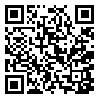Volume 12, Issue 3 (Pajouhan Scientific Journal, Spring 2014)
Pajouhan Sci J 2014, 12(3): 52-57 |
Back to browse issues page
Download citation:
BibTeX | RIS | EndNote | Medlars | ProCite | Reference Manager | RefWorks
Send citation to:



BibTeX | RIS | EndNote | Medlars | ProCite | Reference Manager | RefWorks
Send citation to:
Moradi N, Baghban K, Soltani M, Javadipour S, Seihei E. Survey of Some acoustic features of maternal speech in Persian speaking mothers. Pajouhan Sci J 2014; 12 (3) :52-57
URL: http://psj.umsha.ac.ir/article-1-31-en.html
URL: http://psj.umsha.ac.ir/article-1-31-en.html
1- , shiva.javadi63@gmail.com
Abstract: (7878 Views)
Introduction: When adults talk to another person, linguistic characteristics of the listener will also be considered. A clear example of speech changes depending on the listener is maternal or infant directed speech. Infant directed speech is more slowly with longer sentences and pauses at the end of the utterance. Undoubtedly the most distinctive feature of this style of speech is acoustic characteristics. In this study, acoustic features of directed speech are investigated in Persian.
Methods: The voice samples of 30 Persian mothers during interacting with their infants and during a conversation with an adult were recorded. Mother's age and education level, number of children were matched with each other. The voice samples were analyzed by using Praat software and mean fundamental frequency, frequency range, and voice break in the infant and adult directed speech were evaluated.
Results: Paired T- test showed that the mean fundamental frequency, frequency range, and voice break in infant directed speech were significant differences with adult speech directed .
Conclusion: Comparison of fundamental frequency in infant and adult speech oriented showed that Persian mothers during interacting with their infants speak with low voice frequency and have a higher frequency range. These results may explain the exaggerated and rhythmic patterns in the infant directed speech. Results showed that the Persian, such as English, when adults talk to infants change their speech style. Accepting this result can be offered that the Children's TV presenter, speech therapists, occupational therapists and others who deal with children in order to better communicate and attract attention use this speech style.
Type of Study: Research Article |
Received: 2014/09/10 | Accepted: 2014/09/10 | Published: 2014/09/10
Received: 2014/09/10 | Accepted: 2014/09/10 | Published: 2014/09/10
Send email to the article author
| Rights and permissions | |
 |
This work is licensed under a Creative Commons Attribution-NonCommercial 4.0 International License. |





